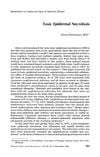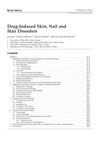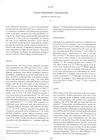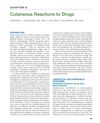Toxic Epidermal Necrolysis
July 1991
in “
International Journal of Dermatology
”
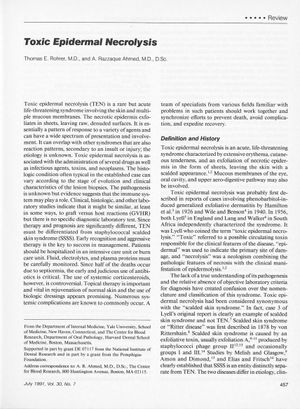
TLDR Toxic Epidermal Necrolysis is a rare, serious skin condition that can affect anyone, is more common in women, and may be linked to genetics, with a 20% mortality rate mainly due to sepsis.
The 1991 document on Toxic Epidermal Necrolysis (TEN) describes it as a rare, life-threatening skin condition with unknown etiology and pathogenesis. It is associated with drugs, infections, toxins, and neoplasms, and shares similarities with graft-versus-host reactions. Diagnosis is clinical, as there are no specific laboratory tests, and management includes intensive care, with controversy surrounding the use of systemic corticosteroids. The document notes that TEN affects all age groups, is more common in women, and may have a genetic component. Clinical presentation includes a prodrome phase, skin lesions, and mucous membrane erosions, with histological features of epidermal necrosis. Immune system abnormalities are observed, but their role in the pathogenesis is unclear. Treatment focuses on fluid balance, infection control, and wound care, with a multidisciplinary approach being essential. The mortality rate is around 20%, with sepsis as the leading cause of death, and prognosis is worse with increased age, extent of necrosis, and serum urea level. Complications can include infection, gastrointestinal bleeding, renal dysfunction, and ocular problems, but early intervention can prevent serious sequelae. Hair typically regrows normally after recovery.
